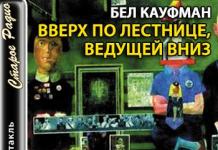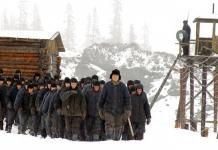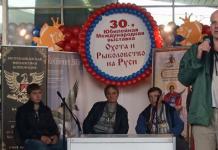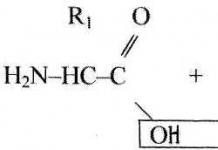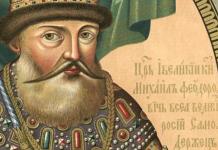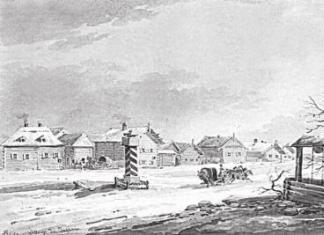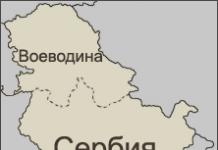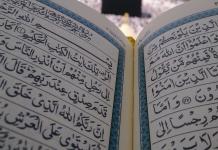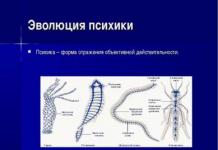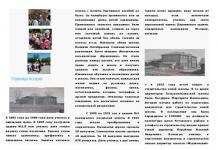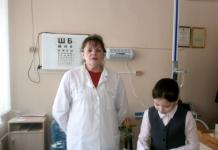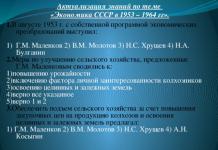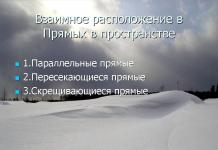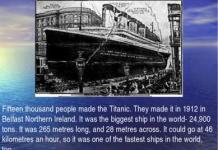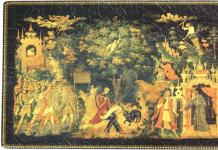ACTIVITY 1
Theme: Letter differentiation o-a .
Tasks: teach children to compare letters o-a by design; consolidate knowledge about the spelling of these letters in syllables and words; learn the differentiation of letters o - a in syllables and words; develop optical-spatial representations; to acquaint children with words-paronyms; develop vocabulary.
Equipment: letters oh-ah(On the desk); tables of letters (on the board); word patterns; crossword; cards for individual work - "Notes", album 2.
STUDY PROCESS
I. Organizing moment
1. Introduction to tables.
Speech therapist: Look at the tables of letters (posted on the board) and find the letters that are similar in style. Write them down in pairs.

2. Comparison of letters similar in style.
The speech therapist invites the children (in turn) to name the recorded pairs of letters and compare them with each other.
Differentiation of the letters "o - a" 9
II. Main part of the lesson
1 . Comparison of letters similar in style (task 1. p. 3 *). Introduction to a couple of lettersabout - a . Recording the topic of the lesson. Listening to the fairy tale about the letters of the sisters. Speech therapist: Listen to the story of sister letters.
“Once upon a time there were two sister letters (speech therapist puts on the board a stylized image of letters o-a). The sisters were very similar. In order not to confuse her daughters, the mother braided the pigtail of one daughter, and the second went with short hair. The sister letters were inseparable: in some words they did not want to part at all and stood side by side. And so they lived. Over time, people learned to distinguish them - when they saw the sisters from afar, they shouted: “Look, this is a letter a - little sister with a pigtail, and here is the letter about- without a pigtail.
2.Comparison of elements and whole letters o-a
(tasks 2. 3. p. 3).
Letter a - consists of two elements, the letter o - from one oval. Comparison of articulation of sounds o-a. When making a sound a - the mouth opens wide, when pronouncing about - the mouth resembles an oval in shape. Correlation of sounds with letters and symbols for designation in writing.
Speech therapist: Consider geometric shapes-symbols (task 2, p. 3), next to the letters oh. Think and say which figure is more convenient to designate a letter in a letter a, and which letter about? What color is the shape and why? (red oval for o, red triangle for a).
Connect the elements of the letters to make letters o - a (task 3, p. 3). Write these letters element by element.
3. Development phonemic perception(exercise"Notes").
Speech therapist: Look at the cards. Name the notes. Write down only those in the name of which there are letters o - a.
10
4. Differentiation of letters o-a in words (task 5. p. 4).
Speech therapist: Look at the flowers: words with missing letters are written on them o-a. Guide each bee to its flower. Read the words. Indicate the presence of letters o - a in words using symbols. Explain the meaning of the words: regiment, slag.
4. Work at the word level.
Exercise "Entertaining models."
Speech therapist:
Consider word patterns. Substitute in the first place on the left the consonants offered below (one at a time), and in the second place - first the letter a, then about. Read the received words. Write them down. With what letters did you get two words? What one? 
6. Work with words-paronyms.
Speech therapist: Name only those words from the previous task that can be paired (kidney - pack, daughter - dacha, dot - wheelbarrow, bump - pitching, ox - shaft, dol - gave).
Compare the words in each pair by spelling, meaning and sound.
7. Development logical thinking.
Speech therapist: Guess the words of the crossword puzzle and write down the names of funny people.
1. This cheerful little man draws well, his nose helps him in this.
2. This cheerful little man knows nothing.
8. This funny man is made of wood, he loves his dad, but doesn't want to go to school.
Differentiation of the letters "o - a" 11
4. This cheerful little man makes people laugh in the square. This is the artist's favorite doll.
5. This little girl flew away with a swallow to warm climes.
6. This little man is a great master and inventor. He has springs instead of arms and legs, and a light bulb instead of a nose.

Answers: Pencil, Dunno, Pinocchio, Parsley, Thumbelina, Samodelkin.
III. Summary of the lesson
Speech therapist: Remember how the letters are similar o-a ? Give examples of words in which these letters are written. (The speech therapist helps to choose such words where these letters are written in a strong position.)
ACTIVITY 2
Theme: Letter differentiation o-a
Tasks: o-a ; to teach children to differentiate the studied letters in phrases, sentences and text; to teach children the skills of syllabic analysis and synthesis; to develop in children the ability to coordinate words in sentences and phrases; train in language and sound analysis; develop visual perception.
Equipment: demo letters o-a On the desk; letter sets o-a and symbols for designating the studied letters on the letter (for each child); word patterns on maps
12 Abstracts of classes on the correction of optical dysgraphia
points; cards with phrases for individual work; writing a poem (on the board); album 2.
STUDY PROCESS
I. Orgmoment
1. Consolidation, knowledge about the studied letters o-a.
Speech therapist: Of the elements (details) of the letters that lie at
you on the table, collect the letters a, oh Remember and name the words for each letter.
2. Writing letters o-a.
The speech therapist invites children to remember the external similarity and difference of these letters, the designation on the letter.
II. Main part of the lesson
1. Development of phonemic perception and syllabic analysis.
Speech therapist: Listen to the words and write down the stressed syllable of each word. Highlight the letters in these syllables o-a.
Words: finger, marmot, cooks, crumbs, nights, winter, cup, stamps, mink, milk, spring.
2. Development of syllabic analysis and synthesis skills. Speech therapist: Read the syllables and make words out of them. syllables: PA, ROCK, KO, MAR, KA, ROM, MA, CAR, U. Sample words: lesson mosquito...
3. Differentiation of letters o-a in words. Working with paronyms.
Speech therapist: Read the words based on the schematic representation of the letters.


4. Development of visual memory.
Speech therapist: Name pairs of words from the previous task. Explain the meaning of all words. Write down only those that are new to you.
Pairs of words: became - a table, himself - a catfish, briefly - meekly, a kidney - a pack, shelves - sticks, an ox - a shaft.
5. Physical minute.
Children perform movements on the instructions of a speech therapist.
6. Development of visual perception and motor coordination (task 4. p. 3).
Speech therapist: Consider the clouds from which the letter rain comes. Draw paths from each letter to the word and read the resulting words. What cloud hides two words? What are these words?
7. Development of the skill of matching words (task 6. p.4). Speech therapist: Fill in the missing letters o - a and
read the words. Make word combinations from the words of groups 1 and 2. Write down the phrases. Highlight letters o-a.
1. RECORD_IMNIL, PL_ET, SK_ET, SK_RY, SP_LI.
2. K_SHKI, SK_ZKU, PL_KSA, K_N, P_ZD.
8. Work at the supply level (task 7. With. 4-5). Speech therapist: Encrypt sentences with letters o-a according to the sample.
Sample. Soon the fairy tale will tell.
O - O A - A A - A - A.
Asters will bloom in autumn.
Smooth asphalt makes people happy.
The nightingale fell silent in the forest thicket.
The lamp went out suddenly.
The old boat has sunk.
14 Abstracts of classes on the correction of optical dysgraphia
9. Differentiation of the letters of the lesson at three hundred (task 8. p. 5).
Speech therapist: Insert letters about- a into words and read the text. Write text highlighting letters about- a and marking them with the appropriate symbols.
T_m k_tik mustache And l_kidney k_tik
P_ wildly wanders, Um_et holy r_tik,
And the k_zlik is horny And the k_zlik is gray
For k_tik x_dit. Shakes his beard.
III. Summary of the lesson
Speech therapist: Name from the poem first the words with the letter a, and then - with the letter o.
ACTIVITY 3
Theme: Letter differentiation at -i.
Tasks: introduce children to letters at- and; teach children hundreds of sounds y-ie letters y - and and symbols (for designation in writing); introduce children to the words-inverted-shami; learn to recognize letters y - and in isolation, in syllables and in words; to develop in children the skills of sound analysis and synthesis, logical thinking, visual perception.
Equipment: letter cards u - and and letter elements at - and, a series of plot pictures for the fairy tale "The Fox and the Crane"; demonstration pictures depicting the heroes of the fairy tale "The Fox and the Crane"; text of riddles; crossword grid drawn on the board; individual notebook.
STUDY PROCESS
I. Orgmoment
1. Development of optical representations (task 1.p. 5).
 Speech therapist:
Consider letter elements and make letters. What letters did you get?
Speech therapist:
Consider letter elements and make letters. What letters did you get?
Letter elements:
Differentiation of the letters "y - and" 15
Children: Letters turned out at - and.
2. Formulate and write write the topic of the lesson on the board.
II. Main part of the lesson
1. Comparison of the letters of the lesson on the outline.
- How many elements are used to write each letter?
- What elements are the same?
- How are these letters different?
The speech therapist invites children to continue the line of letters and - y (task 3, p.5).
2. Associating a letter with a sound.
3. Correlation of letters with symbols for designation on the letter.
4. Development of phonemic perception.
Associating sounds with corresponding letters. Speech therapist: Listen to the sounds, syllables and words and pick up the corresponding letter - at or and.
Sounds: and. A, U, I, W, I, U, B, O, I, I, U.
syllables: PO, PI, TU, WU, VI, LI, LU, ZHU, TSU, CHI.
Words: puddle, book, chickens, sheet, minute, glasses, lessons.
5. Development of logical thinking and visual memory.
Speech therapist: Look at the pictures in your notebook (task 2, p. 5).
What are the names of these heroes? What story are they from? Look at the scene pictures. Arrange the pictures according to the development of the plot.
Images: The fox feeds the crane. The crane feeds the fox. The fox goes to visit the crane. The fox quarrels with the crane.
6. Differentiation of letters and - at the word level.
Development of logical thinking.
Speech therapist: Listen to the riddles and guess them. Name the letter of the lesson to be written in the word.
16 Abstracts of classes on the correction of optical dysgraphia
Under the broom-panicle Grow in the garden
Strands of silk hang. green branches,
(Corn) And they have red kids.
(Tomatoes)
I grew up in the garden, in the summer I'm glad I'm fresh
My character is nasty: Bear berry;
Wherever I go, And dried in stock
I will bring everyone to tears. It heals us from colds.
(Onion) (Raspberry)
Red mouse with white tail
In a mink sits under a green leaf.
(Radish)
What word is missing? Why? (Raspberry. This is a berry, not a vegetable.)
7,Fizminutka.
Children read poetry and do actions. Jumping grasshoppers, Raise their shoulders. One, two. One, two - Head spinning.
8. Development of logical thinking. Working with crossword.
Speech therapist: Guess the words of the crossword.
 |
1. Poultry.
Differentiation of the letters "y - and" 17
2. She wears her house.
3. Wintering bird with a yellow breast.
4. The dog and the anchor have it.
5. A predator that looks like a ferret.
6. Robber at sea.
7. Vegetable growing in the garden.
8. A piece of furniture.
Answers: chicken, snail, titmouse, claw, mink, pirate, cucumber, bed.
9. Development of sound analysis and synthesis skills.
Speech therapist: Consider the letters written by the fox and the crane. Try to compose as best as you can. more words of these letters: I, R, G, U, A, W, K. (Hand, cancer, game, circle, ears, skin, ears, Shura, toy.)
III. Summary of the lesson
Speech therapist: Read the resulting words. Name those words that are suitable for a fox. And now those that are suitable for the crane.
ACTIVITY 4
Theme: Letter differentiation at- and in phrases, sentences and text.
Goals: reinforce children's knowledge of letters y - and; teach children the differentiation of letters y - and in phrases, sentences and text; to develop logical thinking in children, the ability to compose phrases and sentences for the given word, visual perception, sound-letter analysis skills; teach children to compose a story based on a series of pictures.
Equipment: cards with images of letters at- and; demonstration pictures "Fox" and "Crane"; cards for individual work; a series of plot pictures to compose a story.
18 Abstracts of classes on the correction of optical dysgraphia
STUDY PROCESS
I. Org. moment
1. Development of the ability to select antonyms (task 5. p. 6).
Speech therapist: Read the words in the notebook and pick up the “words backwards”.
wide hard old
boring useless sloppy
Make a word from the first letters of the selected words. (Clever.)
2. Definition of the topic of the lesson (task 6. p. 6).
Speech therapist: Remember 5 words with letters and - at.
Write them down in a notebook. Guess what letters we will learn to distinguish today? (Letters and - y.)
II. Main part of the lesson
1. Development of letter analysis. Differentiation of the studied letters at the word level (task 7. p. 6).
Speech therapist: The fox and the crane were playing with words. They inserted letters and - y in words. Each of them wanted to insert their own letter into the words. Help the heroes. Fill in the letters and read the words.
L...TKA...H...TElb SH...TK CHEN....K
GR...SHKA...TK... K...R...CA WISH...D...
V...LK... ...L...CA Sh...ShK... D...DK....
M...H... TR...BARREL... ...DAUGHTER...
2. Work at the word level (task 4. p. 6).
Speech therapist: Guess the puzzles and write down the guess words. Label the letters and ~y in every word. Answers: Shirt, ears, fist.
4. Drawing up a story based on a series of plot pictures.
Development of coherent speech (task 8. pp. 6-7).
Speech therapist: Compose texts for a series of plot pictures. Read the story on p. 6-7. Write it down from memory.
Differentiation of the letters "y - and" 19
Dog Fluff
Sasha had a dog Fluff. Once Sasha went to school. And Fluff was left at home alone. Fluff is a naughty man: he tore off the napkin from the table. Cups and a teapot fell to the floor. Sasha came from school. The boy was very upset. He scolded the dog.
III. Summary of the lesson
Name the words for crane and fox. Remember and say how the letters are similar and how they differ at -i.
ACTIVITY 5
Theme: Letter differentiation and ~y in phrases, sentences and text.
Goals: introduce children to lettering i - y; teach children to match sounds and - y with letters and symbols for designation on the letter; develop visual-spatial orientation, visual perception and attention in children; to consolidate children's knowledge of the rules of spelling; to form the skills of sound-letter analysis and synthesis of words; eliminate kinetic disorders in children.
Equipment: cards with the image of elements of letters i - y; manual "Encrypted syllables"; words with missing letters y - and on cards; allowance "Houses" (an image of two houses with written letters: on one - and, on another - y); pictures depicting people of various professions; manual "Guess the proverb"; album 2.
STUDY PROCESS
I. Orgmoment
1.Development of design skills.
Speech therapist: Consider the elements of the letters and build two letters from them so that they differ in the second elements and denote vowel sounds.
2. Formulate and write on the board the topic of the lesson(Letters i-y).
20 Abstracts of classes on the correction of optical dysgraphia
II. Main part of the lesson
1. Comparison of the letters of the lesson on the outline. Correlation of letters with symbols.
Speech therapist: For and- chose the red circle. For y - red oval.
2. Development of visual attention. Differentiation of the letters of the lesson at the syllable level.
Speech therapist: Read the syllables encrypted with symbols.

Children: them, in, ir, ish, ik, from, mind, un, ur, ush, uk, uz.
3. Associating sound with letter.
Speech therapist: Look at the houses on the board and help the words choose the right one, who needs to go where?
Word cards:

Write the words in two columns in your notebook and indicate the presence of the letters of the lesson in them.
4. Physical Minute. "Grasshoppers" (see lesson 3).
Differentiation of the letters "y - and" 21
5. Development of sound-letter analysis and synthesis.
Speech therapist: Insert letters into words i - ui read the words.
L...PA L...ZHA L...YES
D...MA M...ON CL...MBA R...CHKA
6. Vocabulary development. Consolidation of knowledge about professions.
Speech therapist: Look at the pictures and tell me who the people in the picture work for?
Shows children pictures with images of: a cleaner, a football player, a hockey player, a guitarist, a violinist, a teacher, a builder, a chimney sweep.
What professions can be combined into one group? Why? (Violinist, guitarist - musicians; football player, hockey player - athletes.)
7. Compilation of phrases.
Speech therapist: Make up a phrase with each of the words of the previous task and write it down, indicate the letters of the lesson in this phrase.
7. Development of logical thinking and visual perception. Making proposals.
Speech therapist: Look, the phrase is hidden in the table.
Children: A good book is a best friend. Speech therapist: Write down the proverb and indicate the presence of the letters of the lesson in the words.
What is this phrase? This key will help you solve the riddle:

22 Abstracts of classes on the correction of optical dysgraphia
8. Development of visual perception and visual attention (task 9, p. 7).
KnozhevdeM
aknojewdem ilsenirp ukintoho
lisurts en konozhevdem, utanmok in vapoP
ondobows yaseb lavovtswouchop no
akabos yachintokho alshov ontemazen utanmok V
aknozhevdem alavovtsvuchop uzars ano
metsog miknelam derep ukyots alaleds akaboS
tertoms lats and logu in the nursery base konojewde
unorots in alshoto and og alahunop akabos
ulgu in lunsu and yasliokopsu, hitaz konozhevdeM
That does not work? How to cope with this task? Maybe try to do the opposite: read it not from left to right, but from right to left? What did you get? Write down the text, indicate the letters of the lesson.
Bear cub.
The bear cub was brought to the hunter.
Once in the room, the bear cub did not flinch.
He felt free.
A hunting dog entered the room imperceptibly.
She immediately felt the teddy bear.
The dog made a stand in front of the little guest.
The little bear hid in a corner and began to look.
The dog sniffed it and stepped aside.
The little bear calmed down, calmed down and fell asleep in the corner.
III. Summary of the lesson
Speech therapist: Name from the story words with a letter consisting of two identical elements, words with a letter similar to it, words with both letters.
ACTIVITY 6
Theme: Letter differentiation and - at in phrases, sentences and text.
Goals: reinforce children's knowledge of letters at -,and; teach
Letter differentiation"at - and" 23
children to differentiate similar letters c - y; develop logic in children thinking, small motor skills, visual perception, visual attention. Equipment: subject demonstration pictures on the board; telegram card; crossword; cards for individual work.
STUDY PROCESS
I. Org. moment
1.Introduction to the heroes of the lesson.
Speech therapist: Today, scammers and crooks came to our lesson. (Speech therapist exposes pictures With the image of the heroes of the lesson Chris and Rudy.) They are plotting a terrible atrocity. Let's try to unravel their plans and prevent them from committing villainy.
But first you need to write down the date and topic of the lesson.
Look at the T-shirts of the robbers and guess the topic of the lesson. (Letters i-y.)
2. Recall the designation of letters in the letter and the sounds they represent.
3. Comparative characteristics of the letters and - y.
II. Main part of the lesson
1.Differentiation of letters classes at the level of words.
Speech therapist: I accidentally overheard the conversation of the bandits and found out that they decided to steal a little boy and ask for a huge ransom for him. The villains have prepared a list of the necessary.
Listen to what the scammers decide to take with them and determine how they will share the things. Write the words in two columns and indicate the presence of the letters of the lesson.
Words on cards: BASKET, BAG, BRICK, GLOVES, MAUSER.
2. Work with a deformed proposal.
Speech therapist: The robbers kidnapped the boy Willy. But how could they know what a mischievous, naughty and fighter this
24 Abstracts of classes on the correction of optical dysgraphia
boy! Soon he completely tortured them ... The scammers had cards with sentences that they loved to re-read many times. The boy mixed up all the words in the sentences, now the villains cannot understand anything. Help would-be robbers - unravel the sentences.
In, swims, river, duck.
Dog, moon, at night, barks.
Clown, circus, kids, adults, and, amuses, at.
3. R development of logical thinking.
Speech therapist: The swindlers are no longer happy with their prey, they ask the old man to take back his mischievous son. But it was not there, the old man for some reason is in no hurry with the return of his son. Guess the crossword puzzle and you will find out what condition the old father set for the kidnappers.

1. A mountain from the top of which fire and ashes erupt.
2. A small brown animal that lives in the water and resembles a mole.
3. Threads are wound in ....
4. Swells behind the cobra's head when it is angry.
5. A large non-poisonous snake, otherwise called a boa constrictor.
Answers: volcano, muskrat, ball, hood, python. What word is hidden vertically? (Ransom.)
4. Customized a I work with cards.
Speech therapist: Read the message of the old father to the scammers and try to guess what he wrote about?
Star..k., support b..d,
Don't let kids in ob..d...,
Set .. share the sick ... p ... th
And the bench nval ... d ... .
Differentiation of the letters "y - and" 25
5. Physical minute.
Speech therapist: The prankster Willy mocked the robbers as best he could: he threw stones, spat, forced them to brush their teeth and even do exercises. This one. That's what a dragonfly -Very round eyes. . Spins like an airplane: Right, left, up, forward.
6. Consolidation of spelling rules. Differentiation of letters and-y in the text.
Speech therapist: One night, when Willy was sleeping, the robbers decided to run wherever they look and never return to this city, so as not to meet the prankster Willy. They swore an oath to reform and never again engage in robbery. Slowly they wrote a note to Willy's father and crept on tiptoe to the door of the cave where they had been living lately.
Write down the letter of the robbers in your notebook and try not to confuse the letters and - at, then Willie will not notice the disappearance of the villains and will be able to return to his father in the morning.
The text of the auditory dictation:
“Dear dad Willie! Your son is a terrible bully. Please take it back. We apologize and ask for your forgiveness. We will pay the ransom. Goodbye!
Kidnappers."
Reference words on the board: dear, bully, please kidnappers.
III. Summary of the lesson
Speech therapist: Name words from the text with the letters of the lesson. In what words did you need a red oval to designate letters, where did you use a red circle?
26 Abstracts of classes on the correction of optical dysgraphia
ACTIVITY 7
Topic: Differentiation of letters and - w.
Objectives: to consolidate children's knowledge of letters similar in style; introduce children to letters and- sh; to teach to differentiate letters in isolation, in syllables and in words; to develop logical thinking in children, the skills of sound analysis and synthesis, visual gnosis; learn to correlate a letter, sound and symbol to designate it.
Equipment: cards with images of letter elements i - w; puzzles; cards with letters for making words, album 2.
STUDY PROCESS
I. Org. moment
1. Development of visual gnosis.
Speech therapist: Consider the elements and guess the letters:
Starts with element ;
There are two such elements in the first letter, it denotes a vowel (AND.);
- there are three such elements in the second letter, it denotes a deaf consonant (Sh.). Children: these are letters and shish.
2. Formulate the topic of the lesson (task 1. p. 8).
Speech therapist: Look at the pictures. What letters are hidden in them?
II. Main part of the lesson
1. Matching a letter with a star ukom and symbol (z task 2. with. 8).
Speech therapist: Write down the letters by elements, name their quantitative and qualitative composition.
Children write down letters and name the number of elements, determine the location of all elements in space, then the speech therapist puts symbols on the board to indicate the letters of the lesson: a red two for the letter and, blue three for the letter sh.
Differentiation of the letters "i - sh" 27
2. Development of phonemic hearing.
Speech therapist: Write down syllables under dictation, mark the letters of the lesson.
syllables: li, shu, sha, ti, no, ki, sho, ash, ush, ish.
3. Differentiation of letters i-sh in words(task 3. p. 8).
Speech therapist: unscramble the words and explain their meaning.
3 P 2 K 3 UTK 2 3 AR 2 K
3 P 2 ON 3 2 3 KA 3 2 LO
2 CHILDREN 3 YEARS 2 3 BEIGE 2 3 B
M23KA AF23A MALY 3 2
4. Development of logical thinking. Working with puzzles.
Speech therapist: Guess the words, write them down, mark the letters of the lesson in the words: and - 2, w- 3.
Answers: knowledge, Dmitry, lanterns, pillow.
Speech therapist: Consider the superimposed letters (task 4, pp. 8-9). Make words out of them. Read and write these words.
5. Development of sound analysis and synthesis.
Speech therapist: Name the letters in the word and make as many new words as possible from these letters. Determine which words contain the letter and or sh.
Words: chocolate bar, corridors, photography.
For example: chocolate - school, shock, school, jackal, horse, cat, stake, tub, shred, fret, boat, lacquer, hell, dock, code...
6. Physical Minute.
at the discretion of the speech pathologist.
7. Independent work by cards.
Speech therapist: Read the words on the cards and put the letters of the lesson into the words.
L.PA COR.DOR
OK.ERST
28 Abstracts of classes on the correction of optical dysgraphia
8. The game "Confusion" (task 5. p. 9).
Speech therapist: What the cryptic words made up for you the letters and - sh? Correct the mistakes. Read the resulting words and explain their meanings.
shzbuika itanshiki square meiok
babuika deduika venshk ilak
oslshk ikola fan stitch seam
III. Summary of the lesson (task 6, p. 9)
Speech therapist: Insert the missing letters into the words. Read the words and write them down. Explain the meaning. Name the words that contain:
The letter of the occupation, consisting of two elements,
The letter of the occupation, consisting of three elements.
ACTIVITY 8
Theme: Letter differentiation i - sh in phrases, sentences and text.
Target: reinforce children's knowledge of letters i - w; teach children to differentiate letters i - sh in words, phrases, sentences and text, work with isographs, correlate a letter and a symbol; eliminate kinetic "" * violations in children; develop in children kinetic ideas, visual perception of color.
Equipment: letters i - sh(writing on the board), cards with the image of their symbols; isographs; 2 tables (writing on the board); color chart.
STUDY PROCESS
I. Orgmoment
1. Development of visual perception and attention.
Speech therapist: Can you name what you see in the pictures? What letters, similar in outline, are repeated in words?
Differentiation of the letters "ts - sh" 29

2. Formulate and write down on the board the topic of the lesson (letters and - sh).
II. Main part of the lesson
1. Correlation of the letters of the lesson with the symbols for their designation in writing.
Conclusion: letter and - red deuce, letter sh - blue trio.
2. Differentiation of the letters of the lesson at the level of the phrase (task 7. p. 9).
Speech therapist: Paste capital letters and read the words of the left and right columns.

Speech therapist: Make phrases from words. Write down the phrases in your notebook and indicate the presence of the letters of the lesson in the words. Remember how we define letters i-sh on a letter.
3. Development of language analysis and synthesis (task 8. p. 10).
Speech therapist: Make sentences from the given words and pictures (the words given in brackets are replaced by pictures), (mouse), mink, came out, from. (cat), (mouse), no, sees. Gone, (house), from, everyone. Left, (cat), alone.
30 Mazanova E.V. How to overcome optical dysgraphia?
Went, kitchen, (mouse), on.
Pushed, (cheese), (mouse), (cup), with
Found, there, (cheese), she.
Jumped off, with, (window), (cat),
(cup), broke, fell, and.
But, no, (cat), caught, no one.
This, (the cat), heard.
She ran, (mouse), (cat), and, her, behind.
Children read the resulting sentences aloud.
4. Physical Minute.
at the discretion of the speech pathologist.
5. Working with deformed text.
Speech therapist: Let's read these sentences again and think about what we can make of them? (If you rearrange the sentences, you can make up a story.)
Look, all the words are written on cards of different colors: there are sentences on blue cards, there are on green cards ... etc. Look at the clue strip and put all the sentences in the order they appear on the support.
The speech therapist puts a strip of colored squares on the board, which will serve as a support for further drafting of the text.
Read the resulting story.
Everyone left home. There is only one cat left. The mouse came out of the hole. The cat does not see the mouse. The mouse went into the kitchen. She found cheese there. The mouse pushed the cup of cheese. The cup fell and broke. The cat heard it. The cat jumped from the window. A mouse ran, followed by a cat. But the cat did not catch anyone.
6. Work With text.
Speech therapist: Retell the text from memory. Record it by ear. Specify the letters of the lesson.
To facilitate the task, you can use pre-prepared cards with sentences written on them, with missing letters of the lesson, which the speech therapist puts in a mess on the board. Children write sentences based on a color strip, insert the letters of the lesson and mark them with symbols.
Differentiation of the letters "b - d" 31
III. Summary of the lesson
Speech therapist: Read the resulting text and name the words with the letters of the lesson.
ACTIVITY 9
Theme: Letter differentiation b - d.
Target: introduce children to the letters b - d; teach children to compare letters b -
Games and exercises for the correction of optical dysgraphia
students primary school .
Conduct form: workshop.
Target : To equip teachers with knowledge on the prevention and correction of optical dysgraphia.
Members: primary school teacher, speech pathologist.
Preliminary work:
Handout preparation:
plasticine, mosaic, scissors, colored pencils, deformed letters w / w , mirrors, text, leaflets, pictures, a table of letters mixed with optical dysgraphia, a table of letters similar in spelling.
Event progress:
Introduction. The basis of optical dysgraphia is the insufficient formation of visual-spatial representations and visual analysis and synthesis. Handwritten letters are various combinations of certain elements. I. N. Sadovnikova singles out optically and kinetically similar letters. (table)
If the child does not catch the subtle differences between the letters, then this will certainly lead to difficulties in mastering the outline of the letters and to an incorrect representation of them in writing. Corrective work with this type of dysgraphia is aimed at strengthening the connection between sound and letter, developing visual perception, analysis and synthesis, and spatial representations. Exercises and games are conducted to distinguish colors, shapes, sizes of objects:“Lay out the ribbons from the longest to the shortest”, “Name the color of the objects”, “Count how many triangles are in the picture”, “Name the crossed out drawings”, “Recognize the superimposed drawings”, “What is the difference between 2 pictures?”,as well as games that develop spatial representations:“Who stands to the right of the girl, to the left of the hare, etc.", " Who lives above the squirrel, under the tit" etc.
The collection contains exercises for differentiating the most frequently mixed handwritten letters:o - a, i - y, p - t, x - f, b - d, l - m, i - w.Tasks are built taking into account all the requirements of remedial education. Exercises can be used selectively (depending on the violation) both in group and in individual work with children with optical dysgraphia and dyslexia. Systematic and purposeful remedial work is the key to success in achieving a positive result.
Main part
Approximate tasks for the differentiation of sounds and letters (for example, n and t).
Teachers perform tasks, divided into 3 groups.
1.Fixing the image of letters:
Consider what elements the letters consist of, what they look like. Starting work on the differentiation of letters n - t, it is necessary to draw the attention of children to the number of elements that make up the letter n (2 elements), the letter t (3 elements) and continue to rely on this difference. You can offer a fairy tale "Hurry"
Once upon a time there was a letter t. She had three legs, so she ran very fast. Everyone called her Toropyzhka. She ran and ran the letter t and broke one leg. She limped to the Grammar Queen: “What should I do, one of my legs is broken,” she complains. Now nothing can be done, you had three legs, you were called the letter t, and now you have only a pair of legs left and you will be called the letter p, ”answered Queen Grammar. So the letter t turned into the letter p. Compare the letters "p" and "t", what elements do they consist of?
- Construction of letters from wire.
- Lay them out of the mosaic, cereals.
- Put them in pieces.
- Cut letters out of paper.
- Draw letters.
- Learn them among similar letters (table).
Write down the number of sticks named by the speech therapist.
Sample: 2,3,3,2,3…
Write: // /// /// // ///
B) write the corresponding letters on the sticks.
Sample: p, t, t, p, t ....
Game "Encryption" (decipher the syllables: instead of numbers, write the letters p or t)
2a - 3a 3y - 2y - 3y u2 - u3 o3 - o2 - o3
2i – 3i 2e – 3e – 2e a3 – a2 3a – 2a – 3a
2y - 3y 3o - 3o - 2o o3 - o2 e2 - e3 - e2
Sound combinations:
3u3 2e2 3u3 2o2 2u3 3a2
3i2 2o3 3e3 2e3 3i2 2i2
Unscramble the words:
2ar3a 2lo3nik 2o3o2 2lo3
2y3b 2ash3e3 3e2lo 2is3ole3
3ulu2 2ianis3 2laka3 3ro2inka
2e3la 3e2lohod 2ja3b 3u2ik
Read the sentences and unscramble them:
//op///noy //os///avil for//la///ku on //al///o.
Kuro//a///ka and ///e///erev – round//nye ////its.
//e///i s//rya///al //op///fel in //ar///y.
An3o2 2os3avil 3oma3 juice in the 3rd month.
Kons3an3in 3er2livoly 2roch3al hang up.
Do not s2e3b us 2ro s3e2b?
Make sentences from these words:
Spider, weave, web.
Make a bed, Katya.
Send, Tolya, a telegram.
Pies, on, lie, plate.
By, leaves, fly, wind.
On, Petya, write, sheet.
Encrypt the words by replacing the letter "p" with the number 2, the letter "t" with the number 3.
Dam, passport, stove, package, ward, now, slippers, greenhouse, coat, pharmacy, axe, bast shoes, patrol, partisan, win, tweezers, planet, cabbage, machine gun, steppes, pirate, turn, space, bed, confusion.
Compare words by sound and spelling:
1) Steppe - sing stepped - confused sweat - top
Rags - hide and seek greenhouse - buttonhole
2) regiment - sense of a kidney - point drowned - drank a wheelbarrow - a pack
Pair - container port - the cake became - slept to solder - melt
Make sentences with these words.
Determining the place of the letters "p" and "t" in words using a sound ruler:
P T T
For example: portrait
Words: nickel, cartridge, stupid, trample, patriot, percentage, tent.
Solve riddles and write riddles:
I lay down in my pocket and guard next to the janitor I walk,
Roaring, crying and dirty. I'm shoveling snow all around
I will give them streams of tears in the morning, And I help the guys
Don't forget about the nose. Make a hill, build a house.
I wake everyone up in time, Bows, bows.
I don't wind up the clock though. When he comes home, he stretches out.
The mesh is dense flies do not let go.
Fill in the missing letters "p" and "t":
…olo…but lo…ah…ah…oh…or
…e…uh…abure… …olyo…
la……and…as…ila…las…ilin
Our ... es Timoshka es ... su ... from ... loshka.
Sh ... orm us ... ig ... the boat is not far from ... ... op ... a.
Make up phrases from these words:
heavy T empty T
ACHKA ARA
Old P dance P
Strelkovy T birch P
IR POINT
Luxurious P small T
Marine P oven T
ORT OPIL
Delicious T water P
Word transformation.
Add the letter "p" to make a new word:
LUG - PLOW LOV - ... POINTS - ... ROB
Add the letter "t" to make a new word:
FIR-TREE - HEIFER CUT - PIPE BITCH - STUK BOR - BOARD
Write a poem, underline the letter t:
On nettles, as on tiles, ... Give the aspen
Boiled snail tea. Coat and boots.
Come in for a cup of tea, you need to warm up
Who is not afraid of nettles. Thin donkey.
(V.Stepanov) (I.Tokmakova)
Write the sentences by choosing from the brackets the words that make sense:
The ship comes to (port, cake). Grandfather (became, slept) on the couch. The ugly duckling (became, slept) a beautiful swan. Vitya was presented with a beautiful (port, cake).
Graphic dictation:
A solid wall is a forest. Slender palm trees froze. Colorful parrots sit on the branches. Old poplars grow in the park. Dark clouds float across the sky. A flock of birds flew over the field.
Auditory dictations:
Bees.
The morning was warm. The bees woke up early and flew into the field. There were many flowers: buttercups, daisies, and forget-me-nots. Fragrant linden blossoms. Many bees fly near the linden. Bees work all summer long. We get a lot of honey from bees.
Conclusion.
Using these exercises in working with children, you can prevent and eliminate optical dysgraphia.
Reflection.
SUMMARY OF A SUB-GROUP SPEECH THERAPY LESSON
for the correction of optical dysgraphia in students of the 2nd grade
Lesson time - 40 min.
Grammar topic:differentiation letters I-U in syllables and words.
Lexical topic: professions.
Tasks:
Activation of speech and intellectual activity of schoolchildren;
Development of visual perception, memory, visual-spatial orientation;
Differentiation I-U sounds and corresponding letters;
Development of complex forms of phonemic analysis and synthesis;
Development of logical thinking;
Clarification of schoolchildren's meanings and updating of words semantic group"professions";
Updating of synonyms;
Improving self-control in activities, skills for checking written work;
Raising in children a sense of confidence in their abilities and satisfaction from the success of the work performed;
Raising interest in speech therapy classes, to learning activities In Russian.
Equipment: geometric figures of various colors, pictures of animals, a playing field and a "trained" fly, for the game "Fly", multi-colored figures and a playing field, for the game "Shapes", cards with images of letters y - and and elements of the letters y - and, pictures depicting letters (U, I), cards for individual work.
Lesson progress:
1. Organizational moment.
Hello. Sit down first those who have a red circle on their desk, and then those who have a yellow square, then those who have a green triangle sit down.
Well done. Everyone did their job.
2. Development of visual memory and visual-spatial orientation
1) The game "Animals".
Look carefully at the board. There are six pictures of animals on it. Memorize their sequence, and then I'll take them off. After that, you will tell me in what order the animals were placed.
(horse, pig, dog, elephant, giraffe, fly).
The good guys called it right. Now think about which animal is superfluous, and why(a fly because it is an insect).
That's right, but can the remaining animals be divided into groups? If yes, then which ones?(Yes, you can. A horse, a pig, a dog are domestic animals, an elephant, a giraffe are wild).
2) And now let's play the game "Fly".
At the edge of each desk is an envelope. Take it and get out the "trained" fly and the playing field.
Put the fly in the middle of the field. This fly moves only in the minds of the players. You can't move her hands.
I will give commands, and you mentally move the fly around the playing field. Keep an eye on her, she should not leave the playing field.
The fly flies to the upper right corner, then to the lower right corner, to the upper left corner, to the lower left corner.
Now take the fly and put it where it should be now.
Well done. Now put everything in an envelope and put it on the edge of the table.
3) Game "Shapes"
Now I will distribute multi-colored figures and a playing field to everyone. You will need not to get confused and put the pieces in those cells of the playing field, which I will call.
Put a red circle in the center of the field, put a blue triangle in the upper right corner, under it is a yellow rhombus. Place a green rhombus in the lower left corner, a black square to the right of it. And in the upper left corner, put a brown circle.
Now let's check. Look at the picture on the board. This is how your pieces should have been positioned.
Well done, put everything in an envelope and put it on the edge of the table.
3. Reporting the topic of the lesson.
Now I will give everyone a set of elements of letters. Make letters out of them.
What letters did you get? ( I-U).
Today in the lesson we will train to distinguish between the letters I-U.
1) Comparison of letters I-U according to the style
- How many elements are used to write each letter?(Two)
What elements do they consist of?(hooks, loop)
What elements are the same?(hooks)
How are these letters different?(the letter U has a loop)
Let's imagine that we are writing letters in the air. First we write I, then W.
Now close your eyes, I am each house according to the letter template, you will have to feel it and say which letter is in your hands.
Let's now write in the notebook the letters that I will pronounce: I, U, U, I, U. Well done. Everyone did well.
2) The development of letter gnosis.
Work on individual cards.
You have a card on your desk with letters written on it. Circle the letters U in red and I in blue.
4. Development of phonemic perception. Associating sounds with corresponding letters.
Listen to the sounds, syllables and words, and when you hear the letter U or I, then raise the corresponding picture in which it is depicted:
Sounds: and, a, y, and, u, and, y, in, o, and, and, y.
Syllables: po, pi, tu, wu, wi, li, lu, zhu, tsu, chi.
Words: puddle, book, chickens, sheet, minute, glasses, lessons.
5. Development of sound analysis and synthesis skills.
Look at the letters on the board. Try to make as many words as you can from these letters: i, p, g, y, a, w, k. (Hand, cancer, game, circle, ears, skin, ears, Shura, toy.)
6. Fizminutka. Children read poetry and do actions.
Grasshoppers are jumping
Raise their shoulders.
One, two. One, two -
Head is spinning.
7. Written exercises.
1) The game "Replacement"
Listen carefully to the riddle.
You will find me in a tree
In the flowerbed and in the garden,
In a magazine and in an album
Both in the book and in the notebook
Did you guess? (Sheet)
Now listen to another riddle and replace one letter with another in the word to get a new word:
But I wanted to become a bird -
And I don't need an L.
Write me A at the beginning,
And what is my name - decide.(Stork)
What new word did you come up with?(Stork)
Write these two words in your notebook.
What is the place of sound in these words? Between what sounds AND in the word SHEET? STORK?
2) The game "Find friends of words"
Now I will give everyone cards with words that are close in meaning. They are written in two columns. Read them. Fill in the missing letters with a pencil. (Hint: only the letters we are talking about in today's lesson are missing).
Cutting
adjective adjective
p and s y nok y became
success
sl u tea smelled u chi
at th and y goods and u
u hearty pro and advancing and e
l y w and st fin and k
Now connect the words with the same meaning with an arrow.
Name a couple of words.
Make up two word combinations each. Write them down in a notebook.
Underline the letters I-U.
8. Message of the lexical topic.
Let's unravel the riddles:
Who is more useful in the days of illness,
And cures us of all diseases?
(Doctor)
(Teacher)
We must fight fire
We are partners with water.
We are very much needed by all people,
Answer quickly, who are we?
(Firefighters)
We get up very early
After all, our concern is to take everyone to work in the morning.
(Driver)
How can you name the words you guessed in one word. What it is?(Professions)
8. Development of the dictionary. Consolidation of knowledge about professions.
Look at the pictures and tell me who the people in the picture work for?(pictures are posted on the board: a cleaner, a football player, a hockey player, a guitarist, a violinist, a teacher, a builder, a chimney sweep).
What professions can be combined into one group? Why?(Violinist, guitarist - musicians; football player, hockey player - athletes.)
9. Compilation of phrases.
Make up a phrase with each of the words of the previous task and write it down, indicate in this phrase the letters of the lesson - I-U.
Write down the two phrases you have made. Underline the letters I-U.
10. Mutual verification.
Exchange notebooks, take green pencils, check the work of your comrades and give them grades.
The speech therapist checks the work, reports the results.
11. The result of the lesson.
Our lesson has come to an end.
What letters did we work with in today's lesson?
- Remember and say how the letters U-I are similar and how they differ.
Well done! You were attentive and did a good job today at the lesson.
Lesson over, bye guys!
The proposed course of correction of this violation of written speech consists of eleven speech therapy sessions. Lesson notes have a certain author's structure. Each lesson ends with visual and auditory dictations. All classes include gaming and health-saving technologies. Much attention is paid to kinesiology and visual exercises in each lesson. The system was tested by the author during several years of work at the speech therapy center of the school and gives stable positive results in the correction of optical dysgraphia in junior schoolchildren. The manual is addressed to speech therapists of schools and primary school teachers.
The structure of the teaching speech therapy session by differentiating optically similar letters.
1. Mobilizing stage. Kinesiology workout. Purpose: to improve interhemispheric interaction, to intensify the mental activity of students.
2. Training of optical stimuli.
Purpose: to develop visual perception, attention, memory and spatial representations.
3. Introduction to the topic of the lesson (transcoding the sound into a letter). Purpose: to consolidate the ability to correlate a certain sound (phoneme) with its corresponding letter (grapheme).
4. Reporting the topic of the lesson.
Purpose: to create motivation in children for further work.
5. Learning stage.
Purpose: to teach children to distinguish similar in writing
letters.
The sequence of work at this stage:
- examination of patterns of mixed letters;
- comparison of letters, explanation of their differences;
- the use of a mnemonic technique that facilitates the memorization of mixed letters;
- letter graphics (drawing letters with your eyes closed with your hand, foot, nose in the air or finger on the table);
- finding the elements of each mixed letter;
- construction of letters from found elements, threads, beads or other improvised material;
- finding required letters among the others.
Table of contents
Introduction
Lesson 1. Differentiation of letters a-o
Lesson 2. Differentiation of letters y-u
Lesson 3. Differentiation letters n-m
Lesson 4. Differentiation of letters d-b
Lesson 5. Differentiation of letters k-n
Lesson 6. Differentiation of letters l-m
Lesson 7. Differentiation of letters i-sh
Lesson 8. Differentiation of letters x-zh
Lesson 9. Differentiation of letters sh-ts
Lesson 10. Differentiation of letters z-e
Lesson 11 (summary). Differentiation of letters mixed in writing
List of used literature.
Free download e-book in a convenient format, watch and read:
Download the book Correction of optical dysgraphia in younger students, Summaries of speech therapy classes, Yatsel O.S., 2013 - fileskachat.com, fast and free download.
Download pdf
Below you can buy this book at the best discounted price with delivery throughout Russia.
Look carefully at the letters and name them.
Find the hidden letters "A"

Name the crossed out letters.


Circle only the letter A:

Choose a familiar letter.

Outline the letters.

Correction exercises
optical dysgraphia letter B
Look carefully at the letters, find similarities and differences.
Find the hidden letters "B". Circle them.

Name the crossed out letters.

Identify the letter in the wrong position.

Trace and color only those balloons with the letter B on them.
written correctly. Connect them with strings with Pinocchio.

Add the missing letter element.
Choose a familiar letter

Outline the letters.

Correction exercises
optical dysgraphia letter B
Find the hidden letters "B". Circle them.

Name the crossed out letters.

Identify the letter in the wrong position.

Color only those mittens on which the letter B is written correctly.

Add the missing letter element.

Choose a familiar letter

Outline the letters.
Outline the letters.

Correction exercises
optical dysgraphia letter G
Look carefully at the letters, find similarities and differences.
Find the hidden letters "G". Circle them.

Name the crossed out letters.

Identify the letter in the wrong position.

Color only those pears on which the letter G is written correctly.

Add the missing letter element.

Choose a familiar letter

Outline the letters.

Correction exercises
optical dysgraphia letter D
Look carefully at the letters, find similarities and differences.
Find the hidden letters "D". Circle them.

Name the crossed out letters.

Identify the letter in the wrong position.

Add the missing letter element.

Choose a familiar letter.

Outline the letters.

Correction exercises
optical dysgraphia letter E
Look carefully at the letters, find similarities and differences.
Find the hidden letters "E" and "Yo". Circle them.

Name the crossed out letters.
Identify the letter in the wrong position.

Add the missing letter element.
Color only those soap bubbles on which the letter E is written correctly.

Choose a familiar letter.

Trace and color only those balloons that have the letter Y written on them.
Connect them with strings with a hedgehog.

Outline the letters.


Correction exercises
optical dysgraphia letter Zh
Look carefully at the letters, find similarities and differences.
Find the hidden letters "J". Circle them.

Name the crossed out letters.

Identify the letter in the wrong position.

Color the balls on which the letter J is written. Connect with strings with a giraffe.

Add the missing part to make the letter Z.

Choose a familiar letter.

Outline the letters.

Correction exercises
optical dysgraphia letter Z
Look carefully at the letters, find similarities and differences.
Find the hidden letters "Z". Circle them.

Name the crossed out letters.

Identify the letter in the wrong position.

Choose a familiar letter.

Color the kites with the letter Z spelled correctly. Connect them with threads with a bunny.

Add the missing letter element.
What key fits the lock? Connect the key to the lock.


Outline the letters.

Correction exercises
optical dysgraphia letter I
Look carefully at the letters, find similarities and differences.
Find the hidden letters "I" and "Y". Circle them.

Name the crossed out letters.

Identify the letter in the wrong position.

Repair letters:

Choose a familiar letter.

Color only those cubes on which the letter Y is written.

Outline the letters.


Correction exercises
optical dysgraphia letter K
Look carefully at the letters, find similarities and differences.
Find the hidden letters "K". Circle them.

Name the crossed out letters.

Identify the letter in the wrong position.

Circle and color only those balls on which the letter K is written correctly. Connect them with strings with Carlson.

Choose a familiar letter.

Add the missing letter element.

Outline the letters.

Correction exercises
optical dysgraphia letter L
Look carefully at the letters, find similarities and differences.
Find the hidden letters "L". Circle them.

Name the crossed out letters.
Color only those flags on which the letter L is spelled correctly.

Identify the letter in the wrong position.

Choose a familiar letter.

Color only those light bulbs that have the letter L written on them.

Outline the letters.

Correction exercises
optical dysgraphia letter M
Look carefully at the letters, find similarities and differences.
Find the hidden letters "M". Circle them.

Name the crossed out letters.
Identify the letter in the wrong position.

Choose a familiar letter.

Add the missing letter element.

Outline the letters.



